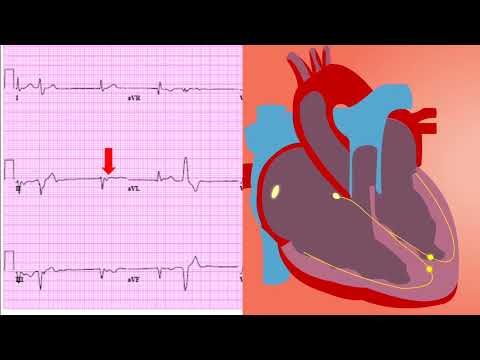🎬 Video Summary
This video provides a concise overview of synchronized cardioversion, a crucial procedure involving the use of a defibrillator. The demonstration highlights the importance of proper technique and timing for successful cardioversion. This video serves as a valuable resource for medical professionals seeking to enhance their understanding and skills in synchronized cardioversion and defibrillation.
🧠Teaching Pearls
- 💡 Synchronized cardioversion delivers a precisely timed electrical shock to restore normal heart rhythm.
- 💡 Understanding the R-wave on an ECG is vital for proper synchronization and avoids delivering shocks during vulnerable periods.
- 💡 Defibrillators deliver a higher-energy unsynchronized shock, while cardioversion delivers a lower-energy synchronized shock.
- 💡 Careful patient assessment, including vital signs and underlying conditions, is essential before performing cardioversion.
- 💡 Proper electrode placement is crucial for effective current delivery and successful cardioversion.
❓ Frequently Asked Questions
Q: What is the difference between cardioversion and defibrillation?
A: Cardioversion uses a synchronized electrical shock to restore a normal heart rhythm, while defibrillation uses an unsynchronized shock, typically in life-threatening situations like cardiac arrest.
Q: When is synchronized cardioversion indicated?
A: Synchronized cardioversion is typically used for unstable atrial fibrillation, atrial flutter, supraventricular tachycardia, and certain ventricular tachycardias.
Q: What are the risks associated with synchronized cardioversion?
A: Potential risks include skin burns, arrhythmias, thromboembolism (stroke), and rarely, cardiac arrest.
Q: How is synchronized cardioversion performed?
A: The procedure involves applying electrode pads to the chest, selecting the appropriate energy level, synchronizing with the R-wave on the ECG, and delivering the shock.
Q: What monitoring is required after synchronized cardioversion?
A: Continuous ECG monitoring, blood pressure monitoring, and observation for any complications such as arrhythmias or thromboembolic events are essential.
Q: What is the role of sedation in synchronized cardioversion?
A: Sedation is typically used to minimize discomfort and anxiety during the procedure, allowing for better patient cooperation and reducing the risk of movement during the shock.
🧠 Key Takeaways
- 💡 Understand the principles of synchronized cardioversion and its applications in treating arrhythmias.
- 💡 Learn how to properly use a defibrillator for synchronized cardioversion.
- 💡 Recognize the importance of synchronization with the R-wave to avoid inducing ventricular fibrillation.
- 💡 Identify the indications, contraindications, and potential complications of synchronized cardioversion.
- 💡 Appreciate the critical role of patient monitoring and post-procedure care.
🔍 SEO Keywords
Synchronized cardioversion, defibrillator, arrhythmias, cardiac rhythm, ECG, electrical shock, cardioversion procedure
“`

